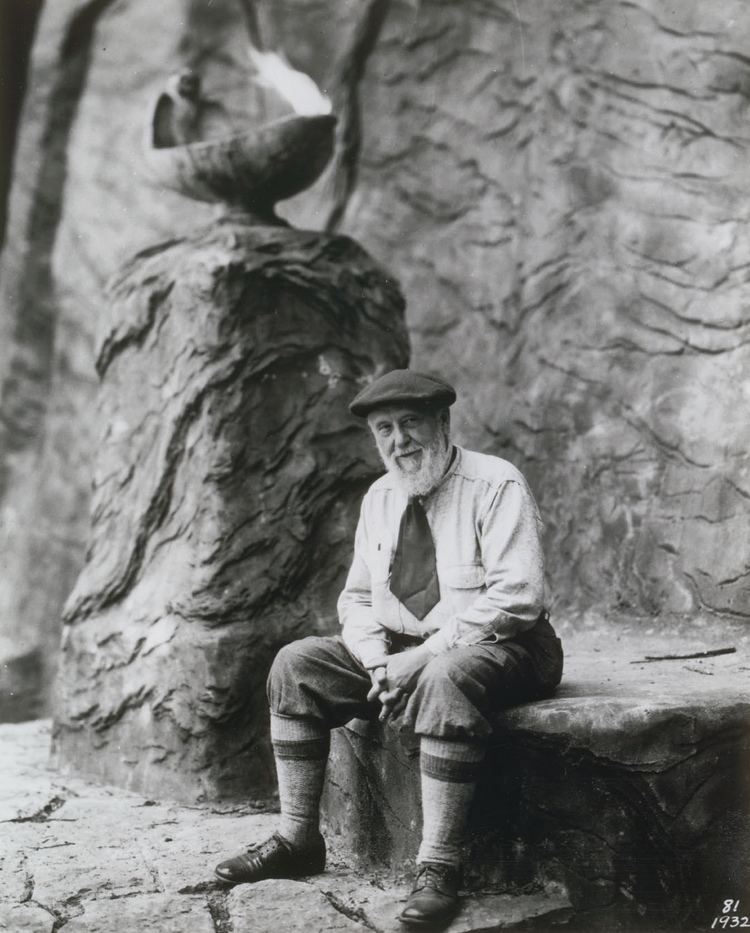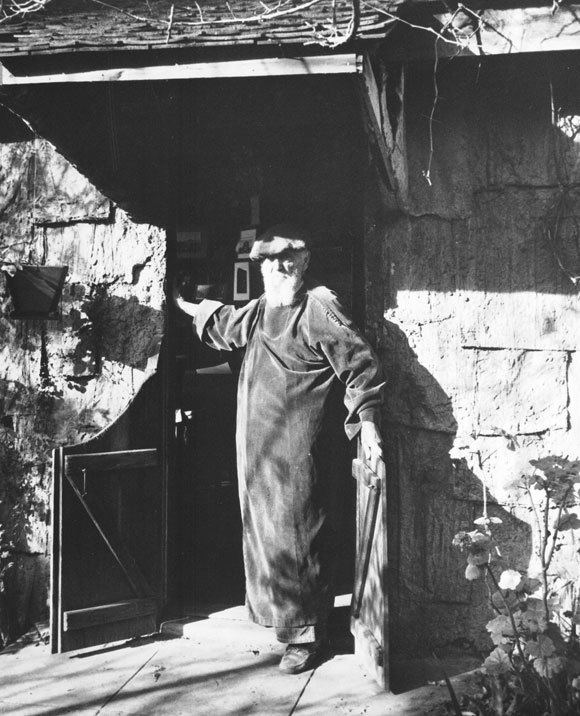Name Bernard Maybeck Role Architect | ||
 | ||
Structures Palace of Fine Arts Theatre, Scientist First Church of, Maybeck Recital Hall, Swedenborgian Church, Faculty Club Similar People Julia Morgan, Phoebe Hearst, William Wurster, Arthur Page Brown, Romualdo Pacheco | ||
Here3 san francisco houses of architect bernard maybeck
Bernard Ralph Maybeck (February 7, 1862 – October 3, 1957) was an American architect in the Arts and Crafts Movement of the early 20th century. He was an instructor at University of California, Berkeley. Most of his major buildings were in the San Francisco Bay Area.
Contents
- Here3 san francisco houses of architect bernard maybeck
- Bernard maybeck the practical designer of great dreams
- Biography
- Works
- References
Bernard maybeck the practical designer of great dreams
Biography

Maybeck was born in New York City, the son of a German immigrant and studied at the Ecole des Beaux Arts in Paris, France. He moved to Berkeley, California, in 1892. He became an instructor of engineering drawing at University of California, Berkeley, and acted as a mentor for a number of other important California architects, including Julia Morgan and William Wurster. In 1951, he was awarded the Gold Medal of the American Institute of Architects.

Maybeck was equally comfortable producing work in the Mission style and Mission Revival style, Gothic revival, Arts and Crafts style, and Beaux-Arts classicism, believing that each architectural problem required development of an entirely new solution. While working in the office of A. Page Brown in San Francisco, Maybeck probably contributed to the Mission Style California Building at the 1893 World's Columbian Exposition in Chicago and the first Mission Style chair, designed for the San Francisco Swedenborgian Church.

Many of Maybeck's buildings still stand in his long-time home city of Berkeley. The 1910 First Church of Christ, Scientist is designated a National Historic Landmark and is considered one of Maybeck's finest works. A number of his works are listed on the National Register of Historic Places.
In 1914, Maybeck oversaw the building of the Maybeck Recital Hall in Berkeley, California. Maybeck also designed the domed Palace of Fine Arts in San Francisco as part of the 1915 Panama-Pacific International Exposition, and for the same fair he carried out his vision of the lumberman's lodge, "House of Hoo Hoo", made of little more than rough-barked tree trunks arranged in delicate harmony. The Palace of Fine Arts was seen as the embodiment of Maybeck's elaboration of how Roman architecture could fit within a California context. Maybeck said that the popular success of the Palace was due to the absence of a roof connecting the rotunda to the art gallery building, along with the absence of windows in the gallery walls and the presence near the rotunda of trees, flowers and a water feature.
One of Maybeck's most interesting office buildings is the home of the Family Service Agency of San Francisco, offices at 1010 Gough Street. This building, constructed in 1928, is on the city's Historic Building Register and still serves as Family Service headquarters. Some of his larger residential projects, most notably a few in the hills of Berkeley, California (see esp. La Loma Park), have been compared to the ultimate bungalows of the architects Greene and Greene.
Maybeck had many ideas about town planning that he elaborated throughout his career. As a citizen of Berkeley from the 1890s, he was intimately involved in the Hillside Club. His associations and work there helped evolve ideas about hillside communities. Maybeck developed a number of firm beliefs in how civilization and the land should relate to each other. Two overriding principles would be: 1) the primacy of the landscape - geology, flora and fauna were not to be subdued by architecture so much as enhanced by architecture 2) roads should pattern the existing grade and not be an imposition upon it. There were other principles he would elucidate, such as a shared public landscape, but these were key, and helped Berkeley evolve into a paradigm for hillside living that was organic and unique. Maybeck's visions for communities in the East Bay were also a conscientious counterpoint to across the bay where in San Francisco city planning was much more conventional, forced, and regimented into expansive grids of streets. Its grids, imposed in places on very steep grades, resulted in extremeley steep streets, sidewalks and urban transitions, some almost comically so.
Maybeck was not doctrinaire however. His views reflected his wide interests and experience. Maybeck would play with more formal Beaux Arts planning principles on less steep grades, as his Palace of Fine Arts and numerous proposals for the University of California, Berkeley campus, San Francisco, and the Loch Lin General Plan for Principia College in Missouri, would reflect.
He also developed a comprehensive town plan for the company town of Brookings, Oregon, a clubhouse at the Bohemian Grove, and many of the buildings on the campus of Principia College in Elsah, Illinois.
A lifetime fascination with drama and the theatre can be seen in much of Maybeck's work. In his spare time, he was known to create costumes, and also designed sets for the amateur productions at Berkeley's Hillside Club.
Bernard Maybeck died in 1957 and is buried in the Mountain View Cemetery in Oakland, California.
Works
Notable works include:
